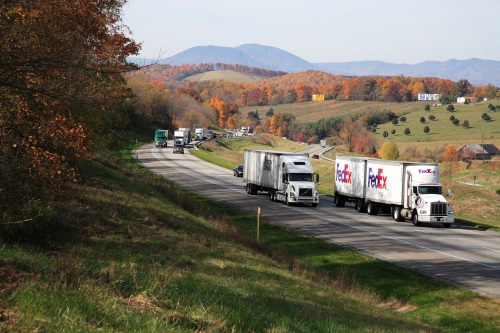A 44-page report issued by the National Association of Manufacturers notes that U.S. investment in infrastructure is now one-third of what it was in 1960; an inadequate level the group believes will lead to the loss of 5.8 million jobs by 2040.
[Above photo by VDOT.]
“Infrastructure investment means jobs. It means safer families, better commutes and faster shipments. Manufacturers want to see a game-changing investment in infrastructure because we know that America’s economic competitiveness depends on it,” explained David, NAM’s chair and the chairman and CEO of Fluor Corp., in a Feb. 28 statement. “For too long, we’ve depended on the investments of the last generation. Now is the time to build for the future—to build for the next generation and to ensure America never again falls behind.”
He added that NAM’s report – entitled “Building to Win” – highlights the consequences of infrastructure “underinvestment” in a myriad of ways.

“Roads are crumbling. Bridges are failing. Ports, waterways, airports, and runways are clogged and congested. The electric grid is strained, our water pipes are deteriorating, and we lack the pipelines needed to deliver reliable energy supplies,” Seaton said. “Making needed investments in a targeted, substantial way will ensure that America can remain a nation that creates and makes its future, thereby shaping our own destiny and enhancing our standard of living for decades to come.”
NAM’s report recommends an “injection” of $1 trillion in infrastructure investment funds, which it said would create 11 million jobs. The group also advocated for more permanent resolution of long-standing fiscal issues, such as “creating a reliable, user-based, long-term funding stream” for highway projects.
Other areas targeted in NAM’s infrastructure report include:
- Accelerate the implementation of NextGen air traffic management technology, along with upgrades to runways and airport facilities.
- Take an “expedited approach” to deepen ports, upgrade aging locks, and enhance intermodal connections by spending the balance in the Harbor Maintenance Trust Fund.
- Eliminate the maintenance backlog for public transit, commuter rail, and passenger rail.
- Promote regulatory and fiscal policies to boost private capital reinvestment in U.S. railroads.
- Further streamline regulations to reduce both the timeline delays and the costs of infrastructure projects.
- Expand public-private partnerships for drinking water and wastewater projects.
- Streamline regulatory processes across multiple agencies and levels of government to foster the use of “next-generation” communications infrastructure, such as broadband or 5G technologies.
 Nation
Nation
The Stream by AASHTO: Electrified Roadway Testing
December 5, 2025 Nation
Nation

